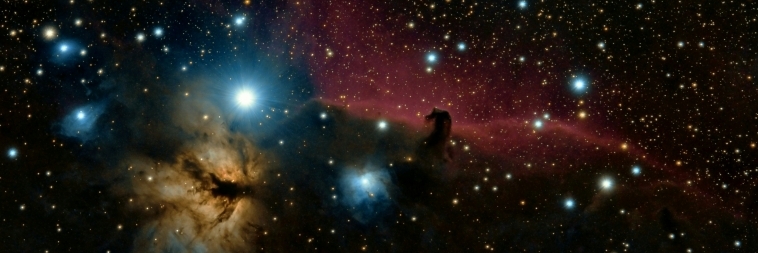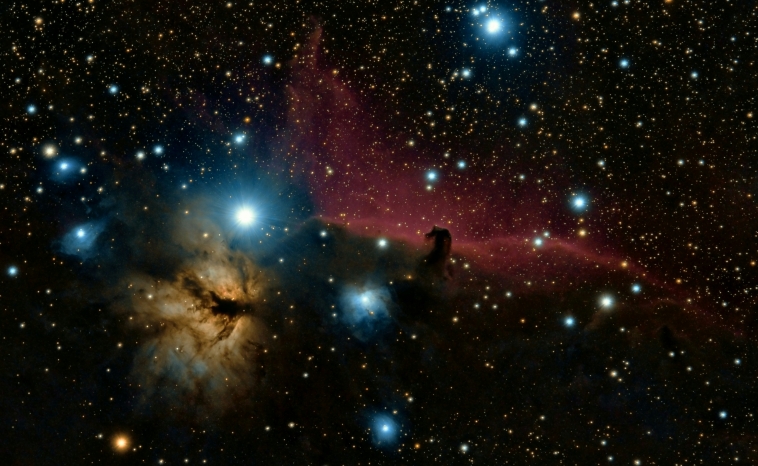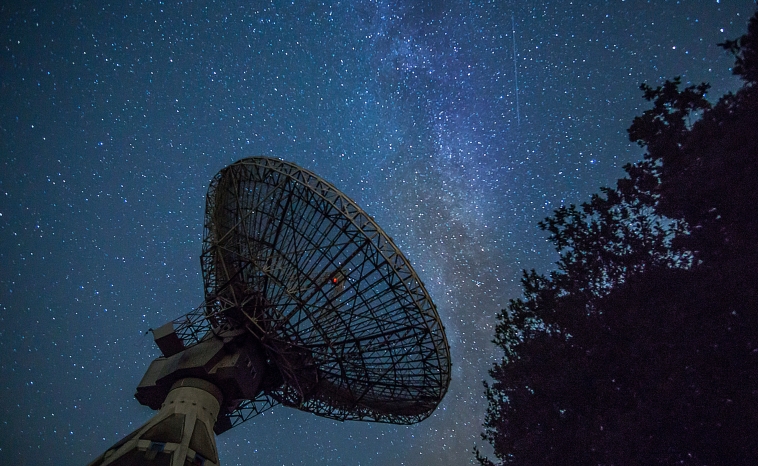Dark Nebulae: The Dark Side of the Night Sky!

What are dark nebulae? Explore these cosmic clouds and their role in star formation with the Online Star Register!
When you think about the wonders of space, your mind probably heads straight towards sparkling stars, glowing planets, and vibrant constellations. But among all that brilliance, there lies something dark and mysterious: regions of space where stars seem to vanish, obscured by vast, shadowy clouds. These are dark nebulae – enigmatic cosmic clouds that play a vital role in the life cycles of stars and galaxies.
In this article, we’ll take a journey into the shadows of the universe and uncover the fascinating secrets of these enigmatic celestial phenomena!
What Are Dark Nebulae?

Dark nebulae are dense clouds of gas and dust that block light from the stars and other objects behind them. Unlike the bright, glowing nebulae that light up the night sky with vivid colours, dark ones remain invisible, unless they’re backlit by nearby stars or other sources of illumination. They’re often present in star-forming regions of the galaxy, acting as stellar nurseries where new stars are born.
These cosmic clouds primarily consist of molecular hydrogen, helium, and trace amounts of heavier elements and dust grains. Though minuscule, dust particles within these nebulae are incredibly effective at scattering and absorbing light, making them appear as a silhouette against the luminous backdrop of the Milky Way, or other celestial bodies.
Famous Dark Nebulae in the Night Sky
While they may be shrouded in a good amount of mystery, there’s several dark nebulae that astronomers have been able to learn plenty about. Here are some of the most iconic examples:
The Horsehead Nebula
Located in the constellation Orion, the Horsehead Nebula is one of the most recognisable in the sky. Its distinct shape resembles a horse’s head rising against the glow of the surrounding emission nebula, IC 434. The Horsehead Nebula is part of a larger region of star formation and offers a stunning example of how dark and bright nebulae coexist.
The Coalsack Nebula
Visible to the naked eye from the Southern Hemisphere, the Coalsack Nebula lies near the Southern Cross constellation. It’s one of the largest and most prominent dark nebulae, spanning across several degrees of the sky. For Indigenous Australian cultures, the Coalsack is part of the “Emu in the Sky”, a dark constellation formed by the Milky Way’s dark patches.
Barnard 68
Barnard 68 is a striking example of an isolated dark nebula, located in the constellation Ophiuchus. Unlike other nebulae that blend into their surroundings, Barnard 68 appears as a perfectly dark oval, blocking the light from stars behind it. Its dense composition suggests it could be on the verge of collapsing to form a new star system.
The Role of Dark Nebulae in Star Formation
Dark nebulae are cradles of creation. These dense regions of gas and dust provide the perfect conditions for star formation. As gravity pulls the material within a nebula together, the cloud’s core becomes denser and hotter, eventually igniting nuclear fusion and giving birth to a new star.
In many cases, they are part of larger star-forming regions known as giant molecular clouds. These immense structures can span hundreds of light-years and contain enough material to create thousands of stars. As stars begin to form, their radiation and stellar winds shape the surrounding nebula, creating stunning structures that blend dark and bright regions.
How Do We Observe Dark Nebulae?

Observing dark nebulae can be pretty tricky due to their lack of intrinsic light. However, astronomers can use several methods to study these elusive clouds:
- Infrared Observations: Infrared light can penetrate dust, revealing hidden stars and nebulous structures. Telescopes like the James Webb Space Telescope are invaluable for exploring these regions.
- Silhouettes: Some dark nebulae are visible as silhouettes against brighter backgrounds, such as the glowing light of the Milky Way.
- Molecular Emissions: Specific molecules, like carbon monoxide, emit faint radiation that we can detect with radio telescopes.
Why Dark Nebulae Matter
Dark nebulae may not be as visually striking as their luminous counterparts, but they are essential to understanding the universe. By studying these regions, astronomers gain insights into the earliest stages of star formation and the composition of interstellar space. They also remind us of the delicate balance between light and shadow in the cosmos, showcasing the beauty of the unseen.
Explore the Night Sky with OSR!

Dark nebulae may hide in the shadows, but their importance to the cosmos cannot be overstated. They are the quiet architects of stars, shaping the universe from the darkness. As you look up at the night sky, remember that the shadows are just as significant as the light, holding secrets waiting to be discovered!
The night sky is filled with wonders! With the OSR Star Finder App, you can explore these celestial treasures from your own backyard. Use the app to locate some of the most stunning and fascinating objects in our little corner of the universe. Download the app today and begin your journey among the stars!

